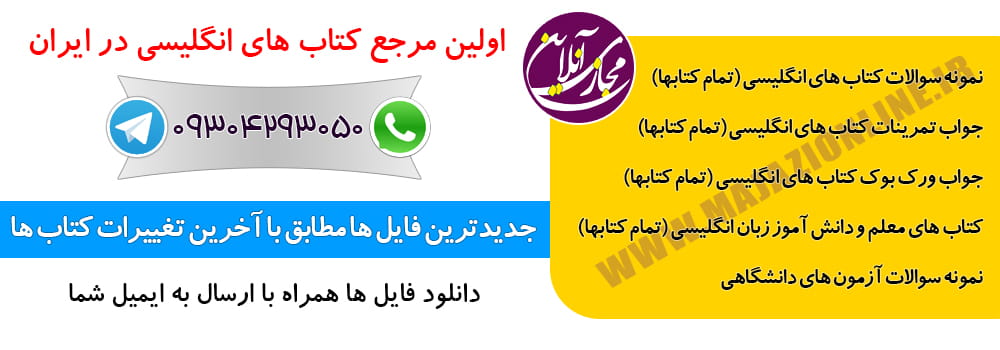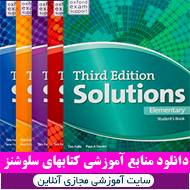جستجو
موضوعات
آموزش جامع فعل های کمکی could-have to - mustدر زبان انگلیسی

Could (past form of can) -------- canنمود گذشته
Describes an ability that someone had in the past:
از could برای بیان توانایی که شخص در گذشته داشته استفاده می شود.
I could swim when I was young.وقتی جوان بودم می توانستم شنا کنم.-------
You could see the boat sinking. شما می توانستید کشتی درحال غرق شدن رو ببینید------
They could tell he was nervous. آنها می توانستند بگویند که او عصبانی بود------
· Couldn’t عدم توانایی انجام کاری در گذشته را نشان می دهد.
· I couldn’t swim when I was young. وقتی جوان بودم نمی توانستم شنا کنم.--------
Often used in auxiliary functions to express permission politely
گاهی با کاربرد فعل کمکی برای بیان درخواست مودبانه به کار می رود.
Could I take this jacket with me?می توانم این کت رو با خودم ببرم
You could borrow my umbrella.شما می توانید چتر مرا به امانت ببرید
Could I get you more water?می توانم آب بیشتری براتون بیارم.
Used to express possibility:
برای بیان احتمال نیز به کار می رود.
It could rain later. Take an umbrella.ممکنه بعدا بارون بباره .یه چتر بردار
Could it be true? اون می تونه درست باشه
This plan could really work out.این طرح درواقع می توانست اجرا شود.
----------------
Must
Used to say that something is required by a rule or law
Used to say that someone should do something
از must برای بیان چیزی که لازمه آن قانون یا مقررات است استفاده می شود. همچنین برای بیان اینکه شخصی باید کاری را انجام بدهد.
I must complete the project by this week.من باید این پروژه را تا پایان هفته تکمیل کنم.-
The government must provide health care for everybody.
دولت بایدخدمات درمانی را برای همه فراهم کند.
Everyone must save the natural resources of the earth.
هر کسی باید ذخیره های طبیعی زمین را حفظ کند.
You must answer my question right now.
Used to say that something is very likely
برای بیان اینکه جیزی به احتمال زیاد اتفاق می افتد یا افتاده است.
He must be a genius. او باید یه نابغه باشه
You must be joking! شما حتما شوخی می کنین
There must be an accident.یه تصادفی باید رخ داده باشه
She must be very tired.او باید خیلی خسته شده باشه
Structure of Must ---- must ساختار
Must is a modal auxiliary verb. It is followed by a main verb. The structure is:
subject + must + main verb
The main verb is the base verb (infinitive without "to").
Look at these examples:
subject
auxiliary must
main verb
I
must
go
home.
You
must
visit
us.
We
must
stop
now.
Like all auxiliary verbs, must CANNOT be followed by to. So, we say:
I must go now. (not *I must to go now.)
Use of Must ------ must کاربرد
In general, must expresses personal obligation. Must expresses what the speaker thinks is necessary. Must is subjective. Look at these examples:
به طور کلی must الزام شخصی رو بیان می کند.Must این نکته را بیان می کند که گوینده فکر می کند ضروری است. Must حالت فاعلی دارد.به این نمونه ها نگاه کنید:
I must stop smoking.من باید سیگار کشیدن رو بزارم کنار
You must visit us soon.شما باید به زودی ما رو ببینید
He must work harder.او باید سخت تر کار کنه
In each of the above cases, the "obligation" is the opinion or idea of the person speaking. In fact, it is not a real obligation. It is not imposed from outside.
در هر یک از نمونه های بالا الزام دیدگاه خود گوینده است. در حقیقت، الزام واقعی وجود ندارد.و از بیرون تحمیل نمیشه.
Have to (objective obligation)
Have to (الزام مفعولی در گذشته)
We often use have to to say that something is obligatory, for example:
ما بیشتر وقت ها از have to برای این استفاده می کنیم که بگوییم چیزی الزامی است برای نمونه:
Children have to go to school. بچه ها مجبورند به مدرسه بروند-----.
Note that we can use the have to expression in all tenses, for example:
I have to, I had to, I have had to, I will have to
دقت کنیم که ما می توانیم از اصطلاح have to در همه زمانها استفاده کنیم.
Structure of Have to
ساختار Have to
Have to is often grouped with modal auxiliary verbs for convenience, but in fact it is not a modal verb. It is not even an auxiliary verb. In the have to structure, "have" is a main verb. The structure is:
بیشر وقتها have to با فعل های کمکی دیگر برای هماهنگی همراه می شود. در حقیقت اون یک فعل کمکی نیست.
در ساختار have to ، Have فعل اصلی است.
Subject + auxiliary verb + have + infinitive (with to)
مصدر با to + have + فعل کمکی + کننده کار
Look at these examples in the simple tense:
subject
auxiliary verb
main verb have
infinitive (with to)
+
She
has
to work.
-
I
do not
have
to see
the doctor.
?
Did
you
have
to go
to school?
Use of Have to ------------------------have to کاربرد
In general, have to expresses impersonal obligation. The subject of have to is obliged or forced to act by a separate, external power (for example, the Law or school rules). Have to is objective. Look at these examples:
در کل، have to الزام غیر شخصی است.فاعل have to ملزم یا مجبور به کاری می شود که دارای قدرتی از بیرون است (مثلا قانون یا مقررات مدرسه). Have to مفعولی است به این مثال ها نگاه کنید.
In France, you have to drive on the right.
In England, most school children have to wear a uniform.
John has to wear a tie at work.
In each of the above cases, the obligation is not the subject's opinion or idea. The obligation is imposed from outside.
در همه موارد بالا، الزام با نظر فاعل یا دیدگاه او نیست. الزام از بیرون به او تحمیل می شود.
We can use have to in all tenses, and also with modal auxiliaries. We conjugate it just like any other main verb.
ما می توانیم have to را در همه زمانها به کار ببریم و مانند فعل های اصلی دیگر صرف کنیم.
منبع: www.majazionline.ir
| برچسب ها : آموزش جامع فعل های کمکی could-have to - mustدر زبان انگلیسی , |
| 1017 | سه شنبه 21 مرداد 1393 | majazionline | نظرات (0) | موضوع(آموزش گرامر زبان انگلیسی) |























در صورت بروز هرگونه مشکل در سایت یا دانلود فقط به شماره 09304293050 در تلگرام پیام دهید IDTelegram: @majazionline1